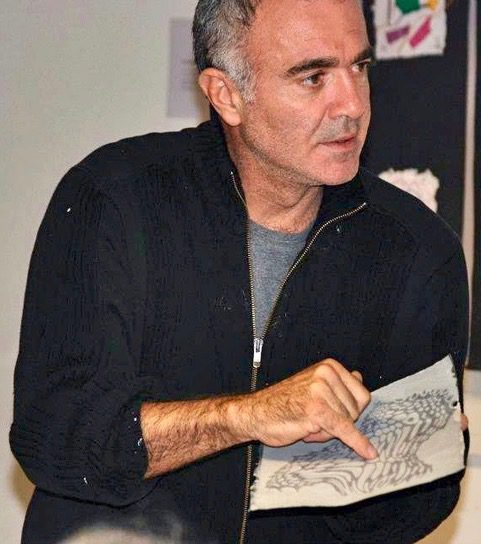One-Piece Packaging Solutions

The Sunday Paper #433
October 30, 2022
As you might imagine, I’m a collector of how-to books about paper crafts and papermaking. One of my early acquisitions was this book, by Paul Jackson, and I refer to his well-known books for designers all the time – they contain a treasure trove of methods for folding, cutting, and pleating paper. (I interviewed Jackson on Paper Talk in 2021).
I was delighted to receive a review copy of Jackson’s new book: Creative Packaging: One-Piece Packaging Solutions, published by Sendpoints. If you know me well, you’ll know that I love the “one-piece” phrase in the title – I’ve been fascinated by one-sheet objects my entire career.
Jackson has mastered getting his points across with informative diagrams and minimal text. He speaks to those who create by hand as well as those who have grown up with devices connected to their fingertips, and he emphasizes (to my delight) the value of understanding how to draw and construct by hand.
We get a great geometry lesson in the first pages of the book that includes diagrams of 12 polygons along with two ways to draft/draw them (around a point or from a given edge). Then we move into the third dimension. Jackson starts with a modular origami cube – the “Jackson Cube” that he designed in the early 1980’s – which holds the key to understanding his system of net design .
Jackson teaches us his ‘net’ construction system – a way of creating a one-piece 2-D diagram that shows what a 3-D package will look like when opened out and flattened – and then goes on to show how his net theory can be generalized for the construction of any solid. He goes into detail about tabs and locks, which are integral to creating paper solids.
This is a work book, complete with questions to answer and puzzles to solve. As with all of Jackson’s books, it would be best to take the time to work through the book systematically, in order to understand the basic principles of constructing geometric solids. I have a hunch that, if you do this, you will come up with your own discoveries – for packaging and other creative projects. Personally, I’d like to add some paper cuts to the flat nets, fold them up, and then illuminate the resulting forms.
———————————————————————————————–––––––
Paper Talk Podcast:
I had a lovely interview when I was in Italy with Roberto Mannino on Paper Talk. Mannino explores form with an abstract, process oriented, non-realistic approach. In Papermaking the very fact that there is a molecular change from liquid to solid implies the presence of natural energies that are embedded in the process itself. His hands-on practice enables him to have a dialogue with the nature of things in relation to his own personal motivations.
 ———————————————————————————————–––––––
———————————————————————————————–––––––
As we approach Halloween and Dia de los Muertos, here’s an informative article about papel picado and how the paper cutting tradition has changed over the years. For example, the designs – which used to be cut in fig-bark paper – are now cut in colorful tissue paper. Yuridia Torres Alfaro, a second generation paper cutter, is still cutting her own stencils by hand at her Xochimilco workshop outside of Mexico City.
–——————————————————————————————–––––––
While we’re on the topic, Béatrice Coron creates paper cut designs that are fabricated in metal to grace public spaces. This is a great story about how her art is tied into an affordable housing development in her neighborhood in NYC.
 ———————————————————————————————–––––––
———————————————————————————————–––––––
Denise Marshall is currently exhibiting her photographic weavings at the Buck’s County chapter of the Fox Chase Cancer Center’s Annual Art Show & Sale. I love this story about how she got into paper weaving.
In 2020, while taking an abstract photography class, a medical problem with her right arm prevented Marshall from holding her camera at times. One week, determined to complete her assignment, she took one of her photographs and cut it up vertically and looked at the deconstructed photograph on a white mat board, moving it apart while keeping the image “together”. Then she had an idea: she took a different photograph, cut it up horizontally, and kept the photograph in order by numbering the strips. She wove the two images together and liked the results, as did her classmates.
Marshall was diagnosed with breast cancer in 2021 and has not stopped weaving (I met her – online – when she was a participant in my Weave Through Winter online class in 2022). She says that it is really powerful to have this form of art to relax her and make her feel great.

© Denise Marshall, The Same Side of the Street. View more of Marshall’s photos by clicking on the image above.
———————————————————————————————–––––––
This is fascinating: the first known map of night sky has recently been found, hidden in Medieval parchment.
———————————————————————————————–––––––
Paper Tidbits:
- I’m teaching my popular 3-hour Shadow Lantern workshop through Maine Media on 12/11.
- Last year I started a new tradition – creating a list of my favorite paper resources for 2021. For 2022, I’d love to include your recommendations as well. Tell me about them here.
———————————————————————————————–––––––
One-Sheet Wonders:
We’re exploring simple tessellations in The Paper Year this month. Check out Carroll Conquest’s lovely illuminated variation.

© Carroll Conquest
———————————————————————————————––––––
| Featured this week in my Studio shop:
The Art of Papercraft, Papermaking with Garden Plants & Common Weeds, Water Paper Time, a film download, and The Papermaker’s Companion. |
|
 |
 |
 |
 |
———————————————————————————————––––––
If you read this blog regularly, would you consider making a donation to support the research, writing, design and delivery of The Sunday Paper? Thanks to everyone who has already pledged your support! Or, perhaps you’re interested in promoting your business in The Sunday Paper.
———————————————————————————————––––––
SHARE THIS blog post with your paper-loving friends!
I occasionally have affiliate links in my blog posts – links to products in which I will receive a small commission if you make a purchase. Thanks for your support!



1 Comment
[…] upon this reasonably priced copy weeks ago. The other one I ordered just days ago after reading Helen Hiebert’s review in her […]